Neurofeedback San Diego
Neurofeedback is a cutting-edge therapy that empowers individuals to learn how to self-regulate their brain activity for improved mental health and overall well-being. Our team in San Diego offers evidence-based neurofeedback sessions, combined with functional medicine expertise.
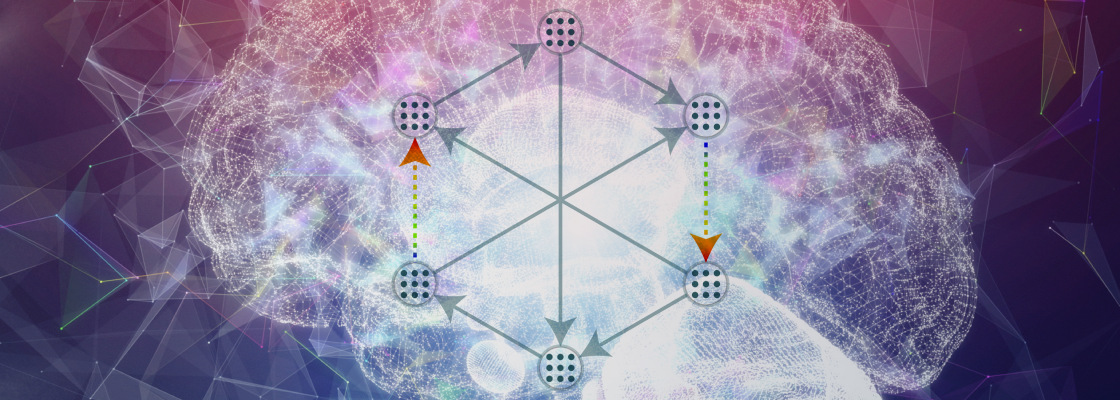
What is Neurofeedback?
Neurofeedback, also known as EEG biofeedback, is a type of brain training that uses real-time monitoring and feedback to teach self-regulation of brain activity.
This technique leverages neuroplasticity, the brain’s ability to reorganize itself by forming new neural connections throughout life, to improve brain function.
By doing so, it alleviates symptoms associated with various mental health conditions.
By providing immediate feedback on brainwave activity, neurofeedback enables individuals to learn how to modulate their brainwave patterns, promoting healthier brain function over time.
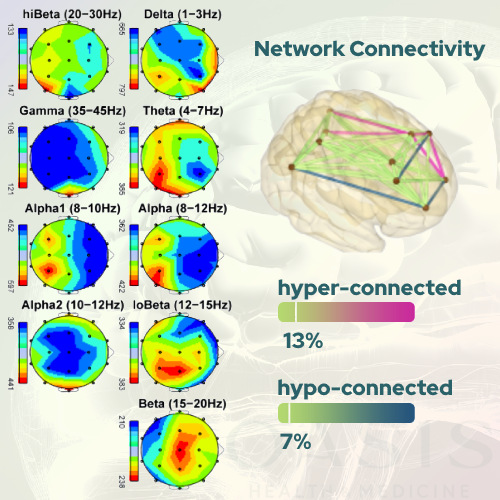
The process begins with attaching sensors to the scalp to measure brainwave activity. These sensors send data to a computer, which analyzes the information and provides real-time feedback.
Through this feedback, individuals can see their brain activity and learn how to regulate it. Over multiple sessions, this practice, aided by the brain’s neuroplasticity, can lead to lasting improvements in mental health and cognitive function.
What is a qEEG Brainmap?
A quantitative electroencephalogram (qEEG) brainmap is a valuable diagnostic tool used to assess brainwave activity and identify any abnormalities.
This comprehensive brainmap serves as the foundation for personalized neurofeedback therapy, helping practitioners pinpoint specific areas of the brain that require targeted training.
During a qEEG brainmap, sensors are placed on the scalp to record electrical activity in the brain.
The data collected is then analyzed to create a detailed map of brainwave patterns.
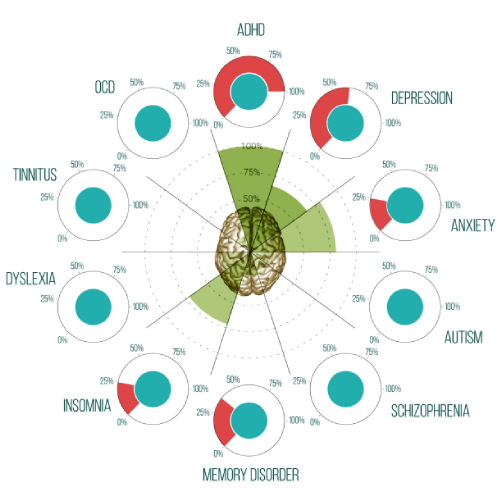
This map highlights areas of dysregulation, such as excess or deficient brainwave activity, which may be contributing to mental health symptoms.
By using this information, practitioners can develop a targeted neurofeedback treatment plan tailored to the individual’s unique needs.
In addition to visualization of deeper brain structures, sLORETA allows practitioners to visualize and train entire brain networks, like the emotion-regulation cortex, the sensory-motor cortex, the dorsal attention network, or the default mode network to name a few.
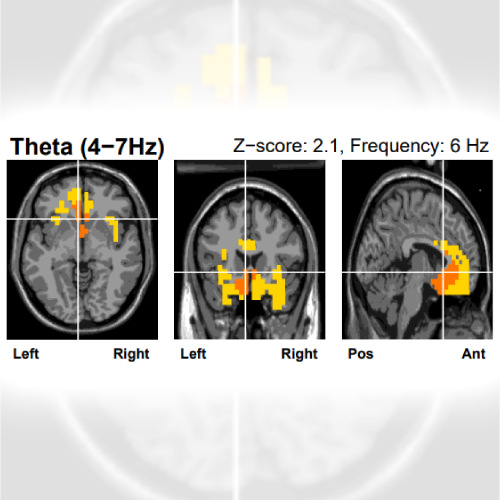
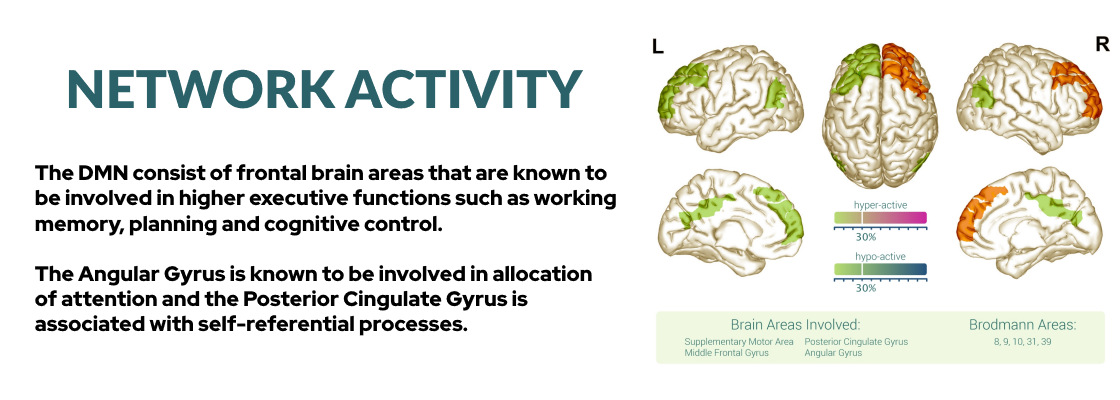
sLORETA (Standardized Low-Resolution Brain Electromagnetic Tomography)
sLORETA, or standardized Low-Resolution Brain Electromagnetic Tomography, is an advanced neuroimaging technique that is used to accurately localize brain activity in three dimensions.
Unlike traditional qEEG brain mapping, sLORETA provides a more precise visualization of neuronal sources, enhancing the understanding of both surface and deeper brain structures.
This technique offers significant advantages by allowing practitioners at Oasis Health and Medicine to pinpoint the exact brain regions associated with dysregulation, contributing to a more effective and tailored neurofeedback treatment plan.
How Does Neurofeedback Work?
- Initial Assessment: The process begins with a thorough assessment, including a qEEG brainmap, to identify areas of dysregulation and develop a personalized treatment plan.
- Training Sessions: During each session, sensors are placed on the scalp to monitor brainwave activity. Real-time feedback is provided through visual and auditory cues, guiding the individual to self-regulate their brainwaves.
- Progress Tracking: Throughout the course of treatment, progress is tracked to ensure the therapy is effective and adjustments are made as needed. This ongoing evaluation helps optimize the treatment plan for the best possible outcomes.

What Conditions is Neurofeedback Useful For?
ADHD
Attention Deficit Hyperactivity Disorder (ADHD) is a complex neurodevelopmental condition that manifests through difficulties with attention, impulsivity, and hyperactivity.
These symptoms can significantly impact an individual’s daily life, affecting academic performance, social interactions, and personal relationships.
The challenges associated with ADHD often lead to frustration and low self-esteem, making it crucial to find effective management strategies.
Traditional treatments typically include medications and behavioral therapy, but these approaches do not work for everyone and can sometimes have undesirable side effects such as appetite suppression or insomnia.

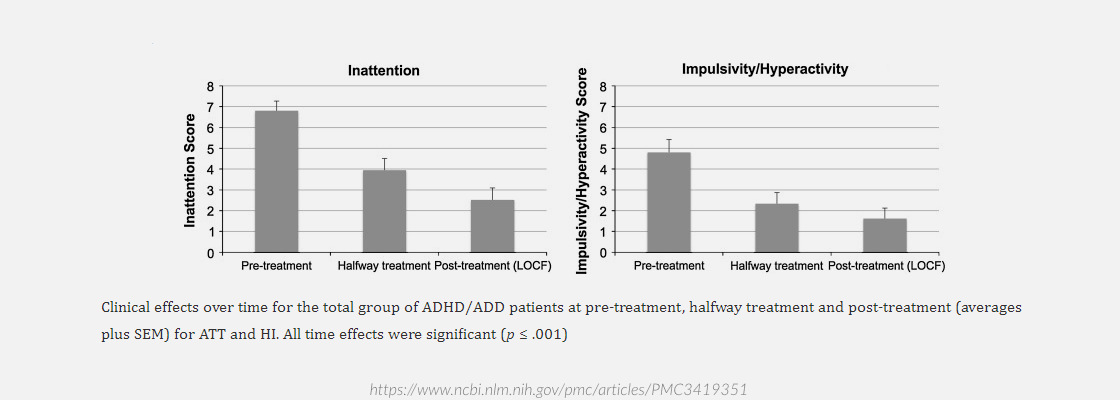
Individuals with ADHD often exhibit atypical patterns, such as excess theta or deficient beta waves. By targeting these frequencies, neurofeedback aims to enhance focus and reduce impulsivity.Studies have shown that training to increase beta waves and decrease theta waves can lead to improved attention and cognitive functioning.
Neurofeedback can result in better academic and social outcomes and reduced ADHD symptoms.
Depression
Depression affects millions worldwide, significantly impairing mood, energy levels, and overall well-being. It can manifest in various forms, from persistent sadness and hopelessness to physical symptoms like fatigue and pain.
The impact of depression on daily life can be profound, affecting work, relationships, and one’s sense of self-worth.
Conventional treatments for depression typically include medication and psychotherapy, which can be effective but may not work for everyone due to side effects or lack of response.
Typically, individuals with depression may exhibit patterns such as increased theta or alpha activity in the frontal lobes and reduced beta activity, as observed in qEEG assessments.

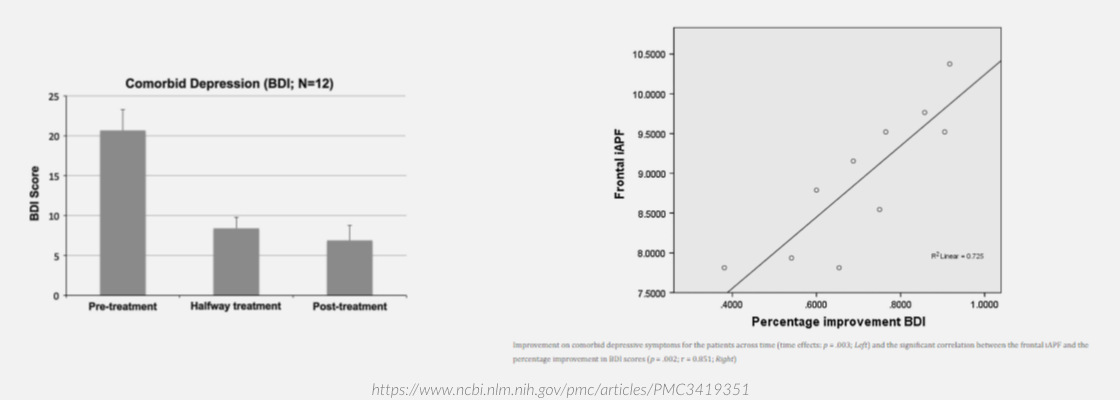
Neurofeedback enables individuals to learn how to generate brainwave patterns associated with a more positive emotional state. This self-regulation can lead to a reduction in depressive symptoms and enhanced cognitive clarity.
Neurofeedback’s non-invasive nature makes it an attractive option for those seeking supplementary or alternative approaches to traditional treatments for depression.
Anxiety
Anxiety disorders are characterized by excessive worry, fear, and physical symptoms such as increased heart rate and muscle tension, affecting millions globally.
These disorders can be debilitating, leading to avoidance of daily activities and a reduced quality of life.
Standard treatments often involve medication and therapy, which can be effective but may not work for everyone, and medications can sometimes have unwanted side effects.
Typically, qEEG findings in anxiety show increased beta activity and decreased alpha waves.
Neurofeedback can help individuals to reduce anxiety levels and promote a sense of calm and relaxation.

OCD
Obsessive-Compulsive Disorder (OCD) is a challenging condition characterized by intrusive thoughts and repetitive behaviors, which can severely disrupt daily life.
Individuals with OCD may spend hours each day engaging in compulsions to alleviate anxiety, impacting their work, relationships, and overall well-being.
Traditional treatments for OCD include cognitive-behavioral therapy (CBT) and medications, which can be effective but do not work for everyone and may have side effects.
Neurofeedback offers a promising alternative by normalizing brainwave activity, potentially leading to reduced symptoms and improved daily functioning.

This approach involves training individuals to alter their brainwave patterns, reducing the intensity of obsessive thoughts and compulsive behaviors.
Through this method, individuals may gain greater control over their symptoms, allowing them to lead more fulfilling and less restricted lives. Typically, qEEG in OCD shows elevated beta waves and altered theta and alpha wave patterns.
Autism
Autism Spectrum Disorder (ASD) is a developmental disorder that affects communication, behavior, and social interaction, with symptoms and severity varying widely among individuals.
People with autism may experience challenges in understanding social cues, communicating effectively, and managing behaviors, which can impact their quality of life and relationships.
Traditional interventions often focus on behavioral therapies and educational support, which can be helpful but are not always sufficient.
Neurofeedback offers an innovative option for individuals with autism by improving brain function, potentially leading to better communication, social skills, and overall quality of life.

Typically, qEEG in autism shows increased delta and theta waves, reduced alpha activity, and altered gamma patterns. By training the brain to produce desired patterns of activity, neurofeedback can enhance cognitive and emotional regulation.
This can lead to improvements in attention, social interaction, and behavioral control, offering a valuable complement to traditional autism therapies.
PTSD
Post-Traumatic Stress Disorder (PTSD) is a complex condition that develops after exposure to a traumatic event, characterized by flashbacks, nightmares, and severe anxiety.
This condition can severely impair an individual’s ability to function in everyday life, affecting work, relationships, and overall mental health.
Standard treatments for PTSD often include therapy and medication, which can be effective but may not work for everyone.
Neurofeedback presents a promising alternative by promoting healthier brainwave patterns, potentially reducing symptoms and improving quality of life.

Neurofeedback can lead to a reduction in anxiety, better emotional regulation, and a decrease in the frequency and intensity of PTSD-related symptoms. Typically, qEEG in PTSD shows abnormalities in beta and theta brain waves.
This approach offers a non-invasive, drug-free option for those seeking to manage PTSD symptoms more effectively.
Schedule Your In-Person or Virtual Discovery Call Today · 858-201-3171
How Neurofeedback Works Best in Combination with Functional Medicine
While neurofeedback can be highly effective on its own, combining it with functional medicine can enhance its benefits and provide a more comprehensive approach to mental health treatment.
Functional medicine focuses on identifying and addressing the root causes of health issues, rather than just treating symptoms. This holistic approach can complement neurofeedback by addressing underlying imbalances that may contribute to mental health conditions.

A crucial aspect of this holistic approach is understanding the gut-brain axis.
This bidirectional communication system between the gut and the brain highlights the importance of maintaining a healthy gut environment.
An imbalanced gut can negatively impact brain function and mental health. By ensuring the right underlying environment through dietary changes and gut health support, individuals may experience more significant benefits from neurofeedback.
Naturopathic doctors at Oasis Health and Medicine may recommend addressing gut health as part of a comprehensive strategy to support brain health and overall well-being.

FAQ
Side Effects of Neurofeedback
How Long Do the Effects Last?
How Much Does Neurofeedback Cost?
How Many Training Sessions Do I Need?
Transform Your Mental Health with Neurofeedback and Functional Medicine - Schedule Your Discovery Call Today
Neurofeedback offers a promising and innovative approach to improving mental health by harnessing the brain’s natural ability to change and adapt.
Whether you’re dealing with ADHD, depression, anxiety, OCD, autism, or PTSD, neurofeedback can provide significant benefits and lasting improvements.
When combined with functional medicine, this therapy offers a comprehensive and holistic approach to mental well-being.
If you’re interested in exploring neurofeedback further, we invite you to schedule a discovery call with one of our experienced doctors at Oasis Health and Medicine in San Diego.

Our team is dedicated to helping you achieve optimal mental health and well-being through personalized, evidence-based care.
References:
- Soutar R, Longo R. Doing Neurofeedback. Isnr Research Foundation; 2011.
- https://www.ncbi.nlm.nih.gov/pmc/articles/PMC7250955/
- https://www.ncbi.nlm.nih.gov/pmc/articles/PMC3419351/
- https://pubmed.ncbi.nlm.nih.gov/19715181/
- https://pubmed.ncbi.nlm.nih.gov/15039008/
- https://pubmed.ncbi.nlm.nih.gov/15598513/
- https://pubmed.ncbi.nlm.nih.gov/20843737/
